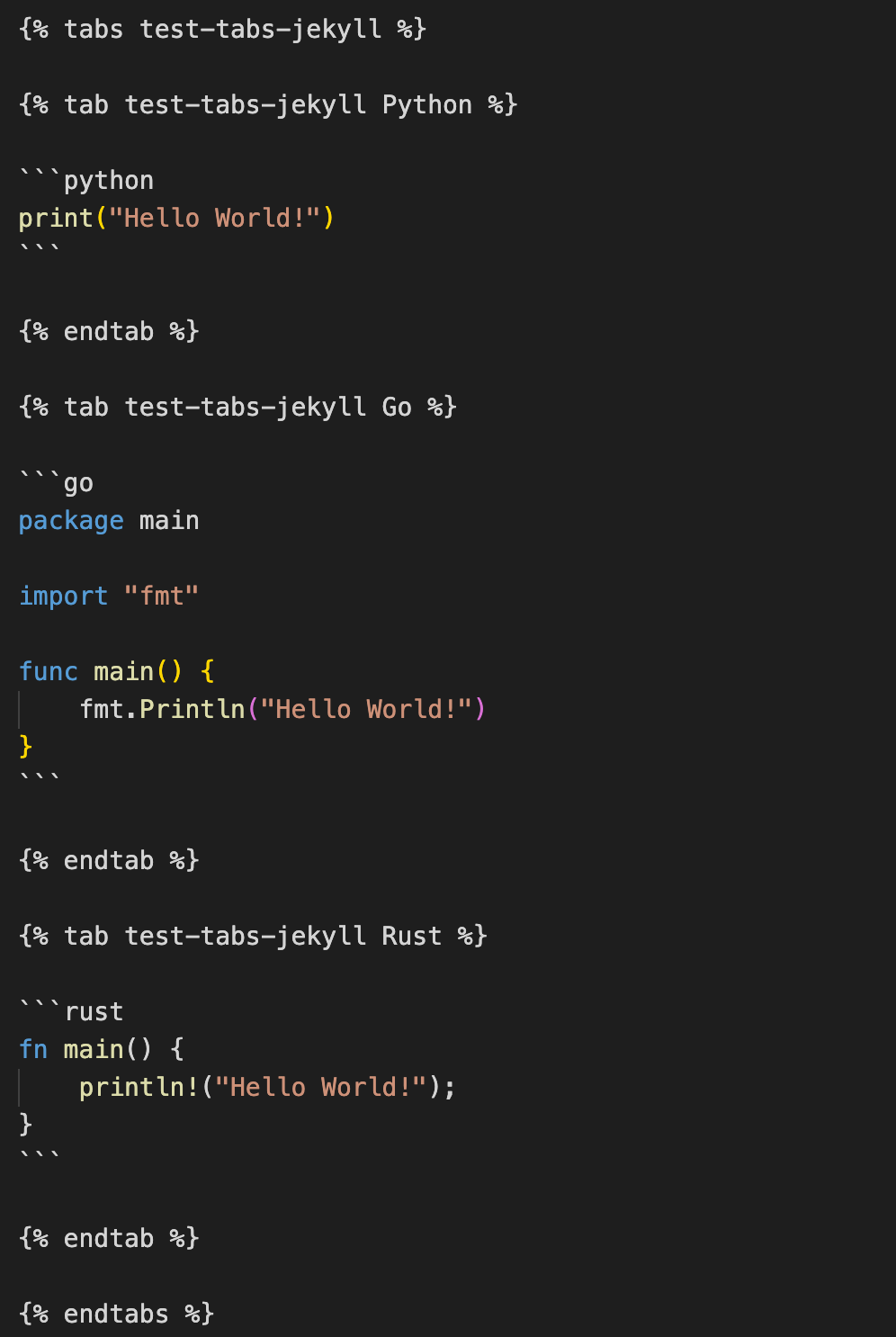Add tabs for Jekyll theme
Install the plugin
Add jekyll-tabs in Gemfile
group :jekyll_plugins do
# ... other gems
gem "jekyll-tabs"
end
Add jekyll-tabs in _config.yaml
# Plug-ins
plugins:
# ... other plugins
- jekyll-tabs
Modify docker-compose.yaml to build your own version. For example, your name as foo, and al-folio version is v0.10.1.
version: "3"
# this file uses prebuilt image in dockerhub
services:
jekyll:
image: foo/al-folio:v0.10.1
# ...
After that, build your own docker image and push to docker hub.
Include the javascript
Copy the content of this file in your public folder (for example assets/js/tabs.js)
<!DOCTYPE html>
<html lang="en-us">
<head>
...
</head>
<body>
<script src="/assets/js/tabs.js"></script>
</body>
</html>
Add tabs style
Copy the content of this file in your public folder (for example assets/css/tabs.css)
<!DOCTYPE html>
<html lang="en-us">
<head>
...
<link rel="stylesheet" href="/assets/css/custom.css" />
</head>
<body>
....
</body>
</html>
Demo
-
print("Hello World!") -
package main import "fmt" func main() { fmt.Println("Hello World!") } -
fn main() { println!("Hello World!"); }

code tabs demo